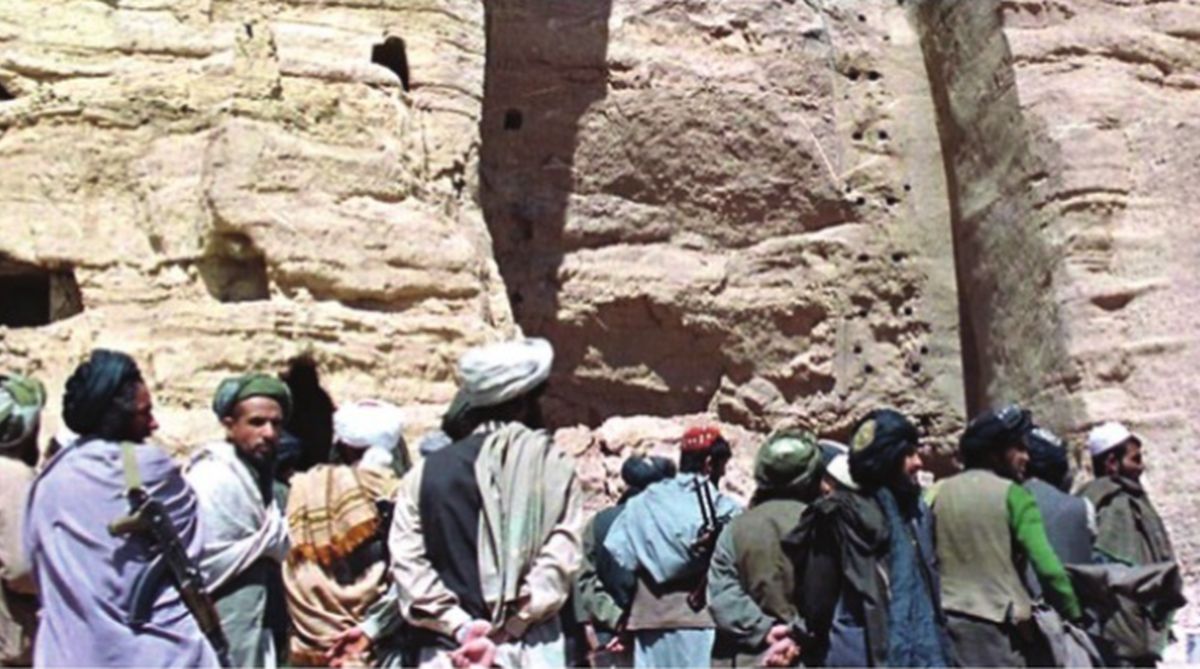Prince Harry declares US home, renounces British residency
Prince Harry officially makes the United States his primary residence, renouncing ties to the UK royal family in a significant move.

Seventeen years on, Afghanistan ravaged by a war of attrition has seen many highs and lows in the past year. From the proposal of privatisation to bringing the Taliban to the negotiation table – the war continues both within the status-mongering global players and between Afghan forces and the Taliban.
What seems pertinent to dwell upon is the transition of states’ behaviour, in the process of conflict resolution in Afghanistan. The global players – US, China, and Russia – have shed considerable weight in retaining overarching influence but to much dismay the war tempo has heightened ever since.
As the United States under President Trump ramped up forces on ground, under the caveat of its new Afghan strategy with no reconciliation mechanism in place, perversely China and Pakistan have long invested in manifesting a strategic depth – which at the regional level aims to counterbalance India, among other things.
Advertisement
With the partial success of the cease-fire during Eid, the holy festival of Muslims, the narrative of peacebuilding has shifted gears considerably. In the immediate circumstances, US has agreed to negotiate with the Afghan Taliban, who endow no legitimacy to Ghani’s government. This has to be juxtaposed with the US reaching a major agreement with India – Communication Compatibility and Security Agreement (COMCASA) — and China trying to strike a balance between Afghanistan and Pakistan, while also securing its ties with Russia. On this geopolitical chess board, US has dual goals in Afghanistan – the renewed objectives as we might concur.
Firstly, US needs to cautiously tread in Afghan affairs, contrary to what Trump earlier thought would be a straightforward solution to the escalating violence perpetuated by Taliban – increasing military strength has compounded the complexity, with Taliban standing as a legitimate actor in peacebuilding. Not only does Taliban have strategic leverage but also has deep territorial hold in almost 70 per cent of Afghanistan. Hence, it becomes essential that US engage with the Taliban – and to thus secure confidence amongst its home audience as well as legitimacy in the global domain.
Secondly, US is increasingly concerned about the role of China, that is also pumped up by Pakistan’s involvement via sheltering terrorists within its borders despite US threats. China has consolidated its plan of extending CPEC into Afghanistan in addition to training the Afghan military. Hence, the Chinese footprint in the conflict-ridden land aims to consolidate its legitimacy as a regional as well as profound global player. In contrast, Trump needs to fasten his belt to prove his policy to amplify US engagement in Afghanistan as justified – hence being able to snowball its strategic presence.
In the midst of increasing challenges on the ground, what also remains another hurdle in the US’ path is its reluctance to bring other relevant partners including Russia into the process of negotiation. This again lurks back to the relationship that China and Russia share, not to mention the latter’s stifling relationship with US.
Thus, to concede the opportunity that Afghanistan offers is rare for the global players: it isn’t only a war between the Taliban and others, but also a site for securing recognition and legitimacy as a global peacemaker, which has been one of the major concerns for the United States.
In this geopolitical conundrum, India plays an interesting role, albeit maintaining its strategic neutrality, whereby its alignment with United States has been considered strategic. To rope in India on the side of US is both ‘necessary’ and ‘inevitable’. India’s role even if limited to humanitarian support has had significant impact on others’ action plans, especially China and Pakistan.
China has made efforts to play a role in rapprochement between India and Pakistan while New Delhi has steadfastly shunned third-front interference. As Afghan forces struggle to hurl a stronger response to the rising Taliban presence, it seems pertinent for the global players, most prominently US to engage vigorously in negotiations – bringing to the fore other relevant partners.
In this context it is even more relevant to take cues from the theory of cosmopolitanism, as a heuristic device, to understand how and why states have been behaving in a particular manner. The states behave according to ‘national interests’ since these, while often essentialised, are never self-evident and are politically contested. There is a world of difference, for instance between Hungary’s implacable hostility to refugees (linked to anti-Islam and anti-Semitic prejudice), under its populist leader, Orban, and Sweden’s relative openness under social-democratic stewardship.
Similarly, that’s the only way to make sense of Sweden’s ‘feminist foreign policy’, including renouncing arms deal with Saudi Arabia, or the way Canada has stood up for human rights against the gulf theocracy, despite a vicious response from Riyadh. The Afghan conflict poses a similar challenge for global players involved, where humanitarian engagement ought to take precedence over national interests – inclusive of status-advancing techniques.
To do this, it is essential to engage with the different competing factions, however covertly, and bring major global and regional players to the negotiation table. Thereby, the competing agenda of the states will be replaced by the mutual goal of establishing peace in the region. Giving precedence to political reformation over military engagement is the only solution to the long war that has hardly borne any strategic results for the United States, or any of the other countries involved.
The writer is a foreign policy analyst who writes on security and conflict issues
focusing on Asia Pacific. She is a Senior Analyst with the Global Risk Insights,
Washington DC and has served as the Strategy Director at the Asia Council, London.
Advertisement